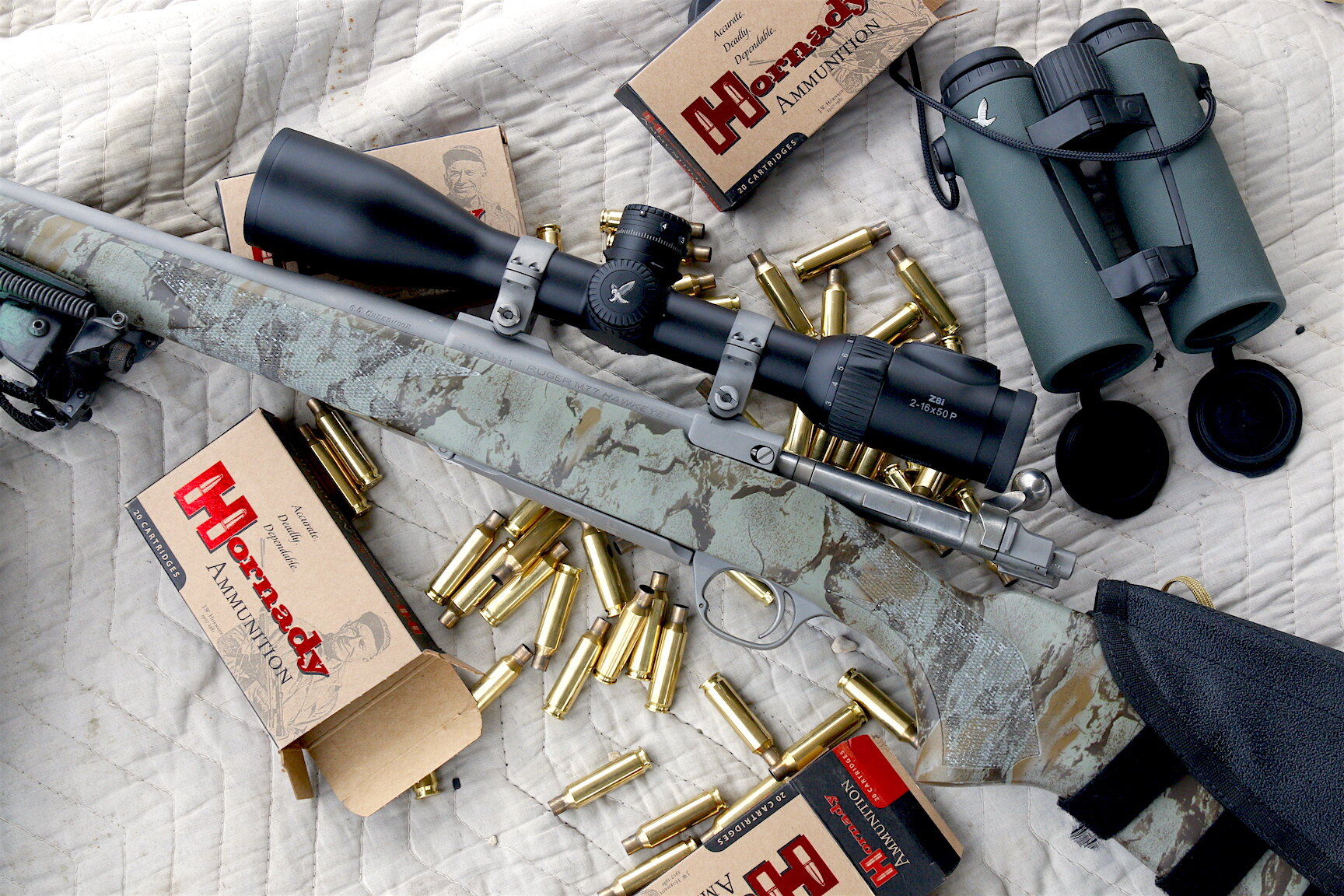A New, Better Way to Shoot Prone
The Ruger Hawkeye FTW Hunter in 6.5 Creedmoor had not trouble connecting on steel plates to 700 yards thanks to high B.C. ELD bullets from Hornady and a super scope from Swarovski. Image isn't everything, but man, was it something!
Former military snipers at the famous FTW Ranch in Texas are wise enough to tell their students: “We don’t teach THE way, we teach A way.” That’s a realistic philosophy born of experience. The right technique for one shooter may not work perfectly for another.
But I’m modifying my prone technique anyway.
While at the ranch last spring, I was testing a prototype Ruger Hawkeye FTW Hunter in 6.5mm Creedmoor topped with a new Swarovski Z8i 2-16x50mm scope. Instructor Dough Pritchard suggested I line up prone directly behind and in-line with my rifle. My dogma rose like the force shields around the Enterprise. Where was this guy coming from? Every rifle shooting manual from the Army’s to the Boy Scouts’ has been showing the prone shooter with his body angled anywhere from 20 to 40 degrees from his target. I’ve been shooting that way for more than 40 years. But for once I kept my mouth shut and my ears open.
FTW Ranch instructor Doug Pritchard explains the mechanics behind his in-line prone shooting position.
“When the rifle recoils straight back into your shoulder it has less tendency to torque up and away from line-of-sight,” Doug explained. “It should then return close to its original position so you can get back on target for a follow up shot. You might even see your hits or misses. Let’s try it.”
For someone who thinks he knows it all, this was hard to take. But I played along. And it worked!
I positioned the Swarovski BRX-1 reticle on the 100-yard target, exhaled and let my body sag into as much ground contact as I could. Then I fought my 16X magnified wiggles, relaxed my grip, timed my heartbeat and tightened the crisp, 3-pound Ruger trigger. It snapped. I didn’t magically see the hole appear in the paper, but when the rifle came out of recoil, the target was back in view. The 140-grain Hornady ELD Match bullet had impacted a half-inch left and a quarter-inch low. Not bad for the first zeroing shot.
Hornady's 6.5 Creedmoor ammo proved deadly on small steel plates out to 700 yards.
Now, a 140-grain bullet from a 6.5 Creedmoor, launched at 2,700 fps, hasn’t the recoil of a 30-378 Wby. Mag. Additionally, the muzzle brake on the end of that Ruger barrel helped tame muzzle jump, but still… Finding a 100-yard, 6-inch bull — after recoil — in a scope set at 16X isn’t standard in my world. Doug’s idea seemed to have merit.
During the next several hours I fired that rifle dozens of times from 200 yards out to 700 yards. Most of the time I was able to see the impact as those sleek, efficient, low-drag Hornady ELD bullets slapped steel or kicked up dust. The rifle wasn’t recoiling off line-of-sight as much as it would have had I been shooting with my traditional 25-degree cant to the targets. This old dog had learned a new trick.
If you, like me, learned traditional prone shooting from a comfortable angle, you might want to test the FTW in-line position and see if it doesn’t improve your ability to stay on target.
I wasn't the only veteran shooter learning the new in-line prone technique.
# # #















